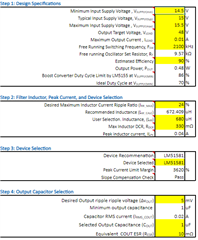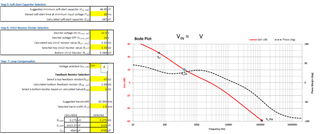Other Parts Discussed in Thread: INA849
Hello everyone. This is my first time posting on this forum... I am a senior student in college working with two other guys on a capstone design project and we have some difficulties in our power supplies. Our project is a microphone preamplifier involving INA849. The core amplifier was simulated and producing good frequency response plot and good SNR. We moved on to designing the driver for phantom power, which is a 48V power supply that will conjunctly feed into the input of INA849. A standalone 48V power supply seemed expensive and violated our principle of designing a cheap but still relatively high fidelity preamplifier. So I searched online and learned that a DC-DC boost converter would do the job of converting 15V (which will be provided by an AC-DC converter LD05-23B15R2) to 48V. Our goal is to use the provided 15V to produce 48V used for phantom power. I see that there exists a quick-start calculator, which is quite helpful since we only need to feed input into it. My intended specialization is in the field of digital VLSI, and I only have a vague understanding that DC-DC converters use PWM signals to control the switches to boost up the voltage... The following configurations are the result me and my teammate tinkering for some time:


My classmate produced the loop compensation part and I was responsible for all other parts. Does this look like an okay configuration or a disastrously wrong configuration that guarantees an explosion? Where can I learn more about how to use this chip? Is this chip even necessary for our design?
Sorry for asking so many questions... Our critical design review is coming up and we were spending too much time on learning what preamp is and debugging cadence simulation on the core amplifier part.

